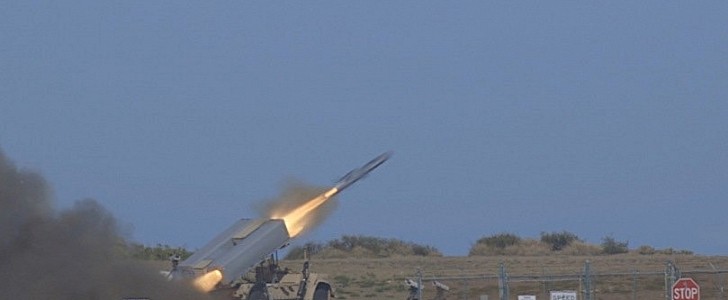We all remember those World War II videos showing airplanes dropping torpedoes and blowing sea-going ships to smithereens. Such kind of battles are of course long gone in the modern world, but China is working on something that could bring that back, and with a vengeance.
Reports popping up in Chinese media like the South China Morning Post spilled the beans this week on a weapon that could put pretty much all military sea vessels at risk. We’re talking about a missile that could fly at altitudes and speeds not currently possible for anti-ship weapons of this kind, then submerge to become a torpedo.
The missile does not have an official name yet, and it’s only at a stage when a blueprint for it was published by a team from the National University of Defence Technology in Changsha in a technology journal.
The document envisions the missile as being capable of flying at altitudes of 32,800 feet (10,000 meters), at speeds that can reach Mach 2 (1,535 mph/2,470 kph). It’s only capable of doing that for about 124 miles (200 km), and it will then dive and transform into a torpedo. In this mode, it can move at 200 knots (230 mph/370 kph) for six miles (10 km), before destroying its target.
This dual mode of operation should be made possible by the missile’s boron-fueled propulsion system. Boron can be found as either a metalloid, or a powder, and has several traits that would make it ideal for use as fuel: it reacts just as well with both air and water, and releases vast amounts of heat in doing so.
It does have some downsides, though, including the fact that when ignited it becomes hard to control, and this is why the U.S. military didn’t pursue this avenue any further when it experimented with boron some decades ago.
The Chinese supersonic, dual-medium missile remains for now just a project on a piece of paper.
The missile does not have an official name yet, and it’s only at a stage when a blueprint for it was published by a team from the National University of Defence Technology in Changsha in a technology journal.
The document envisions the missile as being capable of flying at altitudes of 32,800 feet (10,000 meters), at speeds that can reach Mach 2 (1,535 mph/2,470 kph). It’s only capable of doing that for about 124 miles (200 km), and it will then dive and transform into a torpedo. In this mode, it can move at 200 knots (230 mph/370 kph) for six miles (10 km), before destroying its target.
This dual mode of operation should be made possible by the missile’s boron-fueled propulsion system. Boron can be found as either a metalloid, or a powder, and has several traits that would make it ideal for use as fuel: it reacts just as well with both air and water, and releases vast amounts of heat in doing so.
It does have some downsides, though, including the fact that when ignited it becomes hard to control, and this is why the U.S. military didn’t pursue this avenue any further when it experimented with boron some decades ago.
The Chinese supersonic, dual-medium missile remains for now just a project on a piece of paper.







